from O.R.C.A.

from O.R.C.A.

from Mastodon
It’s been a little over a month since the upsetting news that #KhalifMiller was given a 1-10 year state sentence on top of the 61 month (5 year) Federal sentence that he has been serving since October of 2020.
Khalif is one of the five people indicted along with #AntSmith for his participation in the racial justice uprisings in 2020. He is facing a total of 15 years for attending a protest on May 30th, 2020. This is the new COINTELPRO!
We’re rehashing this 6/1 post from the @FreeAntPHL IG account to bring Khalif back to the top of your feed.
Send him some at:
Khalif Miller #70042-066
USP Big Sandy
U.S. Penitentiary
P.O. Box 2068
Inez, KY 41224
from Mastodon
Khalif Miller needs your court support!! Khalif Miller was one of three co-defendants with Anthony Smith that was prosecuted federally for his actions during the uprising in 2020. He has been held in prison for more than 3 years and is also facing state charges. Please come support our comrade on Friday in court!
Friday 1/26/24, 9am
1301 Filbert St, Philadelphia, Room 707
from Unicorn Riot
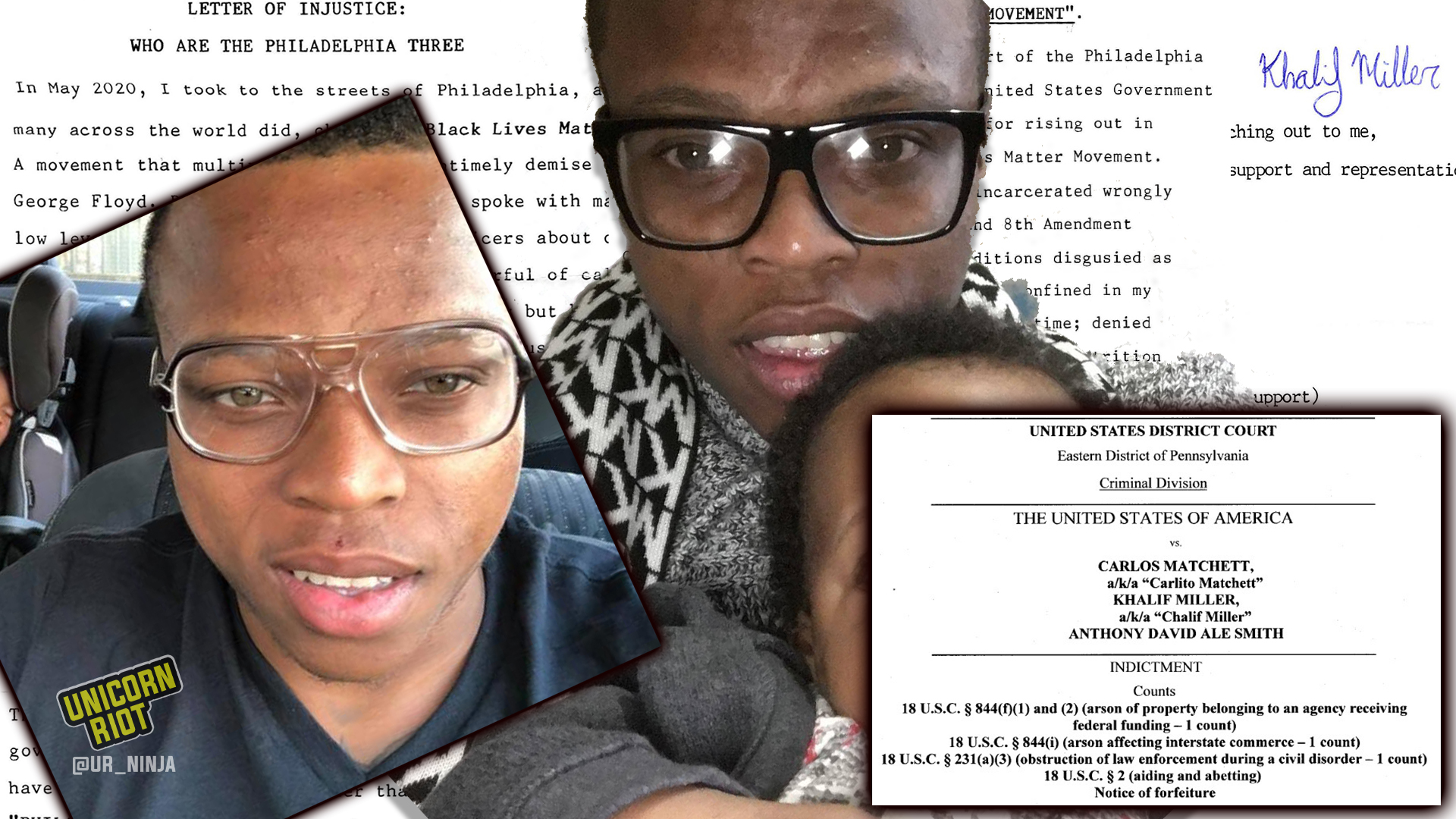
Philadelphia, PA – Federal inmate in the Bureau of Prisons, Khalif Miller, says his rights are being violated while in prison awaiting trial on federal arson charges from the 2020 anti-police uprisings. Miller said he hadn’t had an attorney visit for his first 19 months incarcerated, that he was stabbed 10 times and almost killed in an attack, and has caught COVID-19 twice in prison while awaiting trial as part of a what he says was political targeting by former U.S. Attorney Bill McSwain.
Miller was arrested on October 28, 2020, and charged along with three others, Carlos Matchett of Atlantic City and Anthony Smith, a prominent activist, for allegedly throwing flaming materials into a police car near Philadelphia’s City Hall on May 30, 2020, during the George Floyd Uprising.
Miller has dubbed them the “Philadelphia Three” and the federal government say they conspired together to burn the cop car. Yet, Miller said he’s never even “met nor spoken” to the other co-defendants of the alleged conspiracy and said he was simply taking a picture from atop the police car when it was set aflame.
“The same photo that should’ve set me free, the federal government used to create an elaborate plot in which I have become a political prisoner that I’ve termed the “PHILADELPHIA THREE”, because there are two other people that I’ve never met nor spoken with who the federal government has roped together and charged us with arson and conspiracy all in their endless effort to dismantle and alter the progress of the “BLACK LIVES MATTER MOVEMENT.”
Khalif Miller
Miller wrote to Unicorn Riot from his prison cell and called for support by sharing his story, writing him, and donating for legal support (full letter below with address). Miller is one of over 300 people across the United States who were federally charged during the height of the anti-police and anti-racist uprising of mid 2020. (This wave of prosecutions contradicts claims by supporters of January 6 riot defendants, who often falsely claim the government has declined to serious prosecute nearly anyone for rioting in 2020.)
Miller, a father and business owner, was only 25 years old when he was arrested.
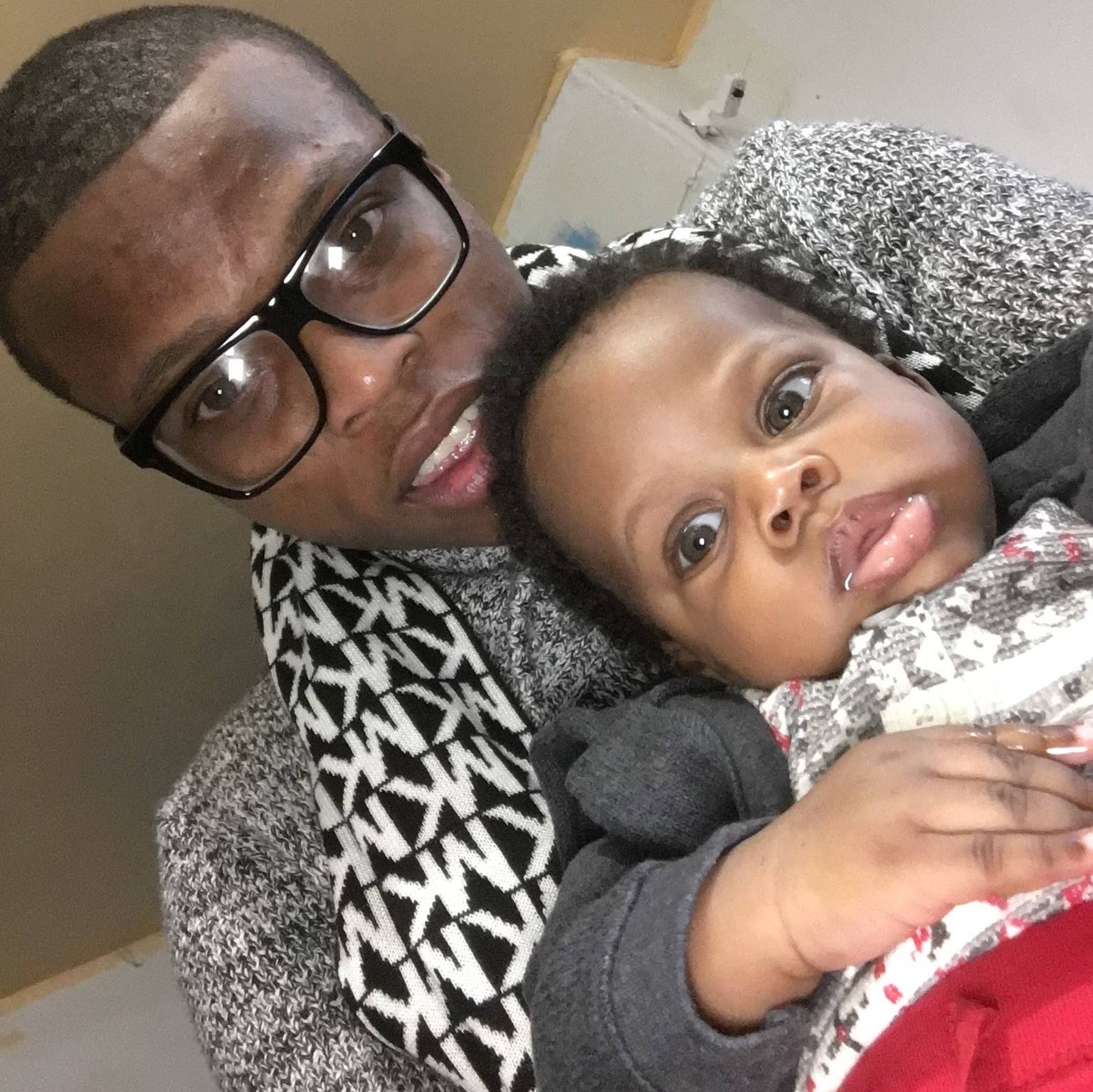
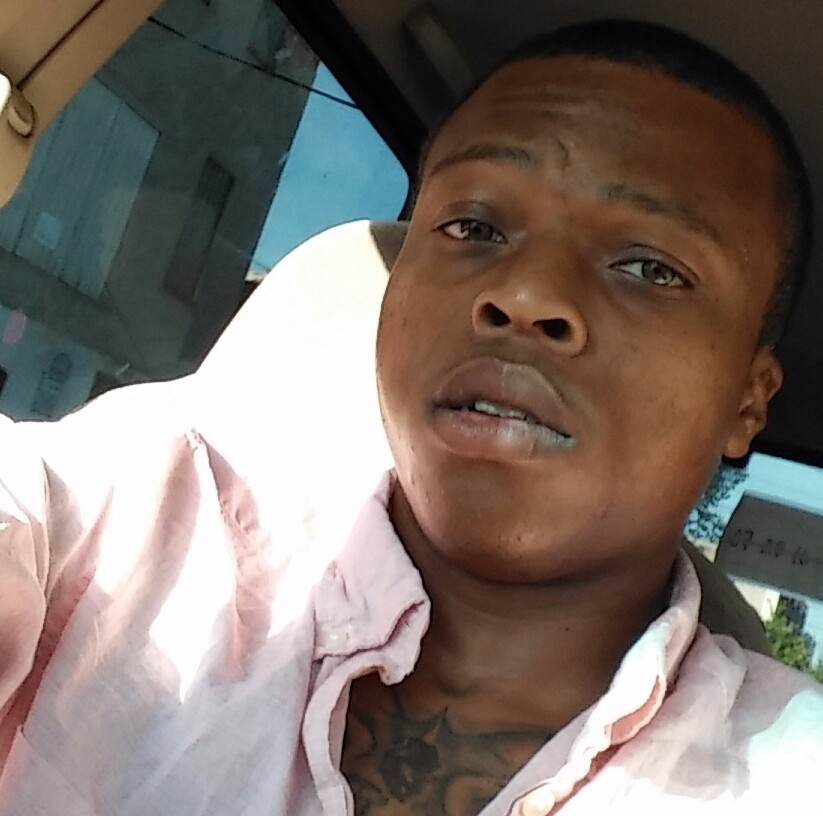
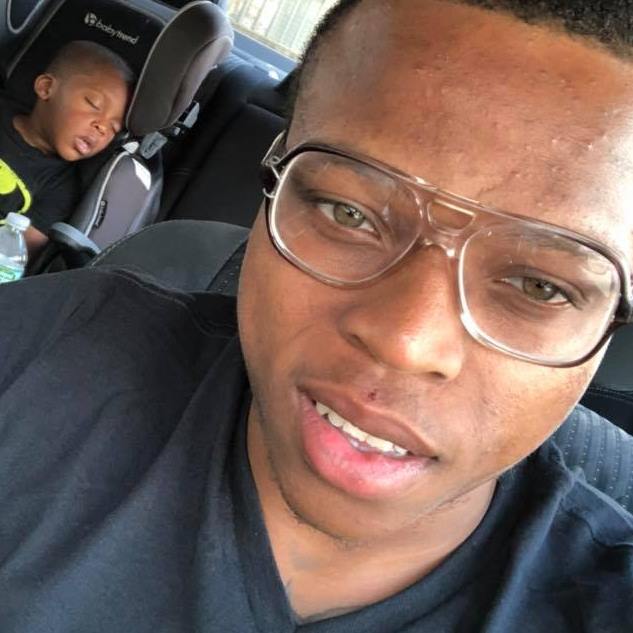
The Philadelphia Three were indicted (pdf) on October 20, 2020, after a grand jury charged them with obstruction of law enforcement during a civil disorder and two counts of arson. If convicted, they face a mandatory minimum of seven years in prison with a maximum of 65 years, with three years of supervised release and a fine of up to $750,000.
After the massive uprisings against anti-Blackness and police terror across the country in 2020, dozens of cities were left with millions of dollars in property damage. The federal government then levied arson charges and a rare 1960s vintage civil disorder charge in attempts to punish protesters with long federal prison sentences. For more on the recent use of civil disorder charges, see our 2020 report on an Illinois man charged with civil disorder by the feds for participating in the uprising in Minneapolis.
In Philadelphia, there were several other high-profile arson cases from activity on May 30, 2020. Directly related to the Philadelphia Three was the case of Lore Elisabeth Blumenthal, a 32-year-old white massage therapist. Wearing a bandana over her face along with goggles, Blumenthal was seen in photographs throwing flaming material toward a police car. Authorities traced the t-shirt she was wearing to an Etsy review and arrested Blumenthal within days.

In March 2022, Blumenthal pled guilty to two counts of interfering with law enforcement officers during a civil disorder in connection with what the feds state was “arson of two” police vehicles, the same vehicles the Philadelphia Three are charged for. Her arson charges were dropped in the plea deal. She was subsequently sentenced to two-and-a-half years in prison.
In a key photograph, Miller is visible in the background standing on the police car, while Blumenthal is the right foreground with the flaming material in her hand. Miller is being charged with arson for the vehicles, yet, he maintains his innocence:
“As the protest started to take a turn, I was taking photos when suddenly mid-photo chaos erupted and the car that I was standing on (a government official vehicle) erupted into flames as it was firebombed. Eventually every vehicle in the area received the same fate.”
Khalif Miller letter to Unicorn Riot
from Making Worlds Books
Join us for a book launch and discussion of Assata Taught Me with author Donna Murch, Koren Martin, and Christina Jackson. Black Panther and Cuban exile Assata Shakur has inspired generations of radical protest, including the contemporary movement for Black lives. Drawing its title from one of America’s foremost revolutionaries, this collection of thought-provoking essays by award-winning Panther scholar Donna Murch explores how social protest is challenging our current system of state violence and mass incarceration.
Murch exposes the devastating consequences of overlapping punishment campaigns against gangs, drugs, and crime on poor and working-class populations of color. Through largely hidden channels, these punishment campaigns generate enormous revenues for the state. Under such conditions, organized resistance to the advancing tide of state violence and mass incarceration has proven difficult.
This timely and urgent book shows how a youth-led political movement has emerged in recent years to challenge the bipartisan consensus on punishment and looks to the future through a redistributive, queer, and feminist lens. Murch frames the contemporary movement in relation to earlier struggles for Black Liberation, while excavating the origins of mass incarceration and the political economy that drives it.
Donna will be in conversation with Koren Martin and Christina Jackson.
[April 9 2022, 4:00 PM – 5:30 PM at ]
from Mainstream Media
A Philadelphia woman charged with torching police cars during the 2020 racial injustice protests in Philadelphia has struck an agreement with federal prosecutors that will spare her the seven-year minimum sentence she would have faced had she been convicted on arson charges.
Lore-Elisabeth Blumenthal, 35, pleaded guilty Wednesday to two counts of a lesser offense — obstructing law enforcement during a civil disorder — each of which carries a maximum sentence of five years in prison.
Her attorney Paul J. Hetznecker called the deal “appropriate” after condemning the previous arson charges — and the harsh sentence they carried — as a ”political decision” and an overreaction to crimes he argued should have been pursued in state court.
A spokesperson for the U.S. Attorney’s Office declined to say whether the deal signaled a wider reevaluation of its stance on protest-related cases. In all, five other defendants are still facing federal arson counts in Philadelphia for setting squad cars ablaze during the heated protests that erupted May 30, 2020, outside City Hall after the police killing of George Floyd.
At the time of the arrests, Attorney General William Barr had urged federal prosecutors across the country to pursue stiff federal penalties against defendants who committed violence and property destruction during the unrest that roiled the country that spring.
Blumenthal’s case became a cause célèbre on both sides of the debate surrounding protests and policing.
Prosecutors described her as a danger to the community who put hundreds of lives at risk by setting fire to cars that could have exploded and endangered packed crowds of peaceful protesters nearby. Left-wing groups labeled her a “political prisoner” jailed for an act of dissent in response to police brutality. They vandalized the Federal Detention Center in Center City, where Blumenthal has been incarcerated since her arrest, calling for her release.
But Blumenthal — a massage therapist with a peace sign tattooed on her wrist — appeared to fit neither the profile of the violent firebrand nor the political martyr that she’s been made out to be as she stood meekly in court Wednesday before U.S. District Judge Barclay Surrick.
Hands clasped behind her back, she spoke slowly and deliberately as the judge ran her through a series of questions to make sure she understood the consequences of her guilty plea. She paused to shout “I love you” to her brother and mother seated in the courtroom gallery, as U.S. Marshals led her back to prison.
Federal agents have said they identified Blumenthal from surveillance photos and video of the chaotic scene that unfolded outside City Hall that day.
They showed a woman, dressed in a blue shirt and wearing flame-retardant gloves, grabbing a burning piece of police barricade that had already been used to set one squad car on fire and tossing it into a police SUV parked nearby.
More photos taken by amateur photographers at the scene helped them zoom in on the woman’s distinctive peace-sign tattoo and T-shirt she was wearing with the slogan “Keep the immigrants, deport the racists.”
from Go Fund Me
David Elmakayes, who is being charged for his participation in last summer’s George Floyd uprisings in Philadelphia, needs money to hire a new attorney. Currently, his public defender is trying to get him to snitch on other defendants to benefit his own case and David wants no part of it.
David is being charged for:
-Maliciously damaging property used in interstate commerce by means of explosive (1 count)
-Carrying explosives during the commision of a felony (1 count)
-Possession of a firearm by a felon (1 count)
You can also write David at:
David Elmakayes 77782-066
FDC Philadelphia
PO Box 562
Philadelphia, PA 19105
Thank you for your time and consideration! With love and rage, Matt B
from Instagram

We appreciate y’all’s support so much and we know it’s been a long road already, but we still have a ways to go before we can #dropthecharges and truly #freeant. We’ve added a linktree in the bio so you can more easily find all of our links to support and please save/share/engage with these graphics so that a.) our community can know how and where to best support Ant and b.) we can mass share with y’all that we have new modes of donating (we heard the requests to have more than PayPal), an updated/new PayPal link, and a Twitter that is now live! . Thank you all again for everything you’ve done already and will continue to do. Having Ant with us is the best feeling and we need him here in our community free of all charges so that he can continue to support his people who rely on him and love him, continue to support our youth, and continue to support our movements as an irreplaceable and beloved member of our neighborhoods. And as always, we name that Ant is not an isolated victim of state and carceral oppression and we stand in solidarity with other political prisoners and incarcerated folks, so when we say #FreeEmAll know we mean that. Let’s Gooooooo!
from Mute
The US saw some of the largest riots and protests in its history this year in response to police murder of black people. Yet there has been scant attention paid to the innovations in struggle specific to these rebellions. Shemon & Arturo take another look at the phenomenon of car-looting and argue that this tactic is inseparable from black liberation
Glass shatters. Thick plumes of dark black smoke pour out of a burning police car stalled in the middle of 52nd street. Another black man shot dead by the police. Another rebellion in defense of basic human dignity. ‘Sir, it’s chaos!,’ one of the officers yells into his radio as they retreat under a barrage of rocks, bottles, bricks. ‘Stop throwing shit!,’ an older black man on a bullhorn yells, but the young black militants keep throwing projectiles anyway. The police, outnumbered by the hundreds, can only watch from a distance as people begin to loot stores all along the ave. The cops concentrate on blocking off major intersections.
While sitting in a traffic jam, waiting for the red light to turn green, a car breaks whatever is left of the law and speeds away. Time and speed do not obey red, yellow, or green here. This is no ordinary traffic jam. It is the traffic jam of black liberation, where looting by car is the art form developed in response to the murder of Walter Wallace Jr. by the Philadelphia Police.
All of a sudden a group of black teenagers pop out of a car and walk down the street, to an unknown destination. Cop cars zoom past them in a panic of sirens, red and blue lights flashing through the darkness, probably rushing to another 9-11 call about looters at a pharmacy, Footlocker, grocery store, or liquor store somewhere else. Across the street, a gas station is filled with cars of young black people hopping in and out, discussions taking place, and music blaring. It is part music festival, part pitstop, and part modern day proletarian council where young people discuss what to do next.
What happened in Ferguson as an impromptu practice has developed into an art in Philadelphia: the art of looting by car. In the United States, black proletarians are constantly refining and sharpening forms, tactics, and strategies of struggle.
In the official record, these activities will be recorded as crime. Joe Biden has already left his statement for all of posterity to see. Biden, like all politicians, spews the great lie of our society: black rioters are criminals. Riots have nothing to do with politics. But there could be nothing further from the truth. Black rioters are the creators of new forms of struggle, new visions of liberation, and new types of revolutionary organization. The accomplishments of the revolt in Philadelphia were powerful, liberating and simply beautiful. While pundits want to dismiss the riots as apolitical or criminal, it is the revolutionary activities of the black proletariat which constitute the actual form of politics that put radical change on the horizon.
Ignoring the Uprising
The main people who take the uprising seriously are the rIght and a small layer of the ultra-left. For liberals and moderates the insurrectionary dimension of the uprising barely exists, since 93 percent of the protests have been baptized as peaceful. Using this statistical sleight of hand, liberalism transforms itself into an ally of black people, equating Black Lives Matter with respectable, non-violent, legal protest, while ignoring the remaining 7 percent of violent protests, i.e. the actual riots. Even socialists have stuck their heads in the sand when it comes to the tactical and strategic implications of the uprising. Everyone condemns racism and police brutality, but for all their claims of solidarity with black liberation, most leftists have fallen miserably short when it comes to actually participating in the riots that have swept this country. At best, most abstain from the insurrectionary aspects of the uprising altogether; at worst, they opportunistically leech off of it in order to build up their particular organizations, brands, and careers. Meanwhile, black proletarians are getting arrested and putting their bodies on the line in a battle of life and death.
At this point in the development of the struggle, any group that claims solidarity with black liberation, but has not been fighting the cops and rioting in the streets, or directly providing aid and support to such activities, is irrelevant. There are no excuses. We have met women, children, parents, elders, undocumented people, people in wheelchairs, on crutches, coming from all genders, abilities, and races imaginable, all throwing down in one way or another during street riots. For those who engage the police in battle, the time for words and social media posts are over. This kind of symbolic anti-racism and solidarity – which has been the bread and butter of liberals and leftists for decades now – has been exposed for the joke that it really is. Solidarity with the movement requires risking your skin. This is not an abstraction; this is exactly what black proletarians are doing.
And it is not only the white, Asian, indigenous, and latinx left that ignores the most dynamic and militant aspects of this uprising, it is also the major black intellectuals and radicals of our time. This should be no surprise, as a similar split occurred among radical intellectuals during World War I in the Second International and again in national liberation struggles during World War II and after.
For all the radical rhetoric of marxism, in terms of its actual deeds and practice, most of the radical left has accommodated itself to the status quo. The law has expanded in response to class conflicts and anti-racist struggles to the point that plenty of harmless forms of activism can be engaged in, but they are simply a new prison for activists and movements. Previous generations have won victories and expanded the law so that we can safely denounce wars, march almost anywhere we wish, and say whatever we want. This range of legality seems like a victory, but has also become a trap that leftist organizations treat as a principle. The fact of the matter is that leftist organizations are simply not prepared to deal with the illegal nature of the revolutionary struggles and politics that are taking place in the present moment. The black proletariat continues to show a practical commitment to fighting the police, setting fire to carceral infrastructure, and looting the commodities of this dying capitalist system. When these are the tactics of the proletariat in motion, what kind of organizational forms make sense?
Organizational, tactical, and strategic clarity is emerging for the first time since the 1960s, but it is not coming from the left – it is coming from the practical initiatives and strategies of the black proletariat. Leftists run their mouths about organizational questions in abstract and antiquated terms, regurgitating a played out formula modeled on Russia or China that has been repeated ad nauseam for many decades now, but which has produced little more than sects and cults. They ignore the concrete forms of revolutionary organization that are already taking place in the uprising.
Revolutionary organizations are not built in the abstract, but are expressions of the real tactical and strategic challenges raised by the proletariat in the class struggle. The fundamental organizational question that revolutionaries face is how to contribute and relate to the uprising, specifically in terms of street fighting, looting, and other riot tactics. Those who are truly committed to revolution will have to push past the stale organizational forms of the past and begin to account for the diverse, illegal, and creative organizational forms that the black proletariat is developing in the present, the use of cars being one of the most innovative and effective tools in this emerging tactical repertoire.
It cannot be completely spontaneous that black proletarians went to Wal-Mart, looted it, and when the cops arrived, evaded them and went on to form caravans that targeted different shopping districts throughout the city. Much of the official prognosis of this moment is that the rioters are unorganized, lack direction, and leadership. In truth, the reality is that there’s a high degree of coordination and organization within the maelstrom of the riot. This should be obvious when caravans of looters swarm specific locations at the same time. To do so, people collectively decide on specific targets, coordinate movement to the target area, and often set up look outs who will warn everyone else when the police are coming.
New Dynamics, New Divisions
Organizations prove themselves in the battle of class conflict, often for specific purposes. In the case of Philadelphia, any organization had to deal with the dynamics of feet and tires. Most people destroyed property and looted stores in one manner or another by marching in the streets, and when the cops came along, they fought and evaded them on foot. But as the state has become more and more prepared for riots, prolonged street confrontations with the police have become more costly, and it has become harder to continue on foot. We first saw this in Chicago after the murder of Latrell Allen, where a caravan of cars looted the Magnificent Mile, and from there dispersed themselves throughout the city. This trend continued in Louisville with the Breonna Taylor protests in late September, where state preparation made an uprising in the city practically impossible. In response, people took to cars and spread the riots geographically by looting businesses throughout the city. This was a brilliant tactical and ultimately strategic innovation when facing the raw power of the state.
Car looting has clear advantages to looting on foot. There’s less peace policing, because there is not as much of an association with a specific geography, and what is often the same thing, a specific race. The most important aspect of car-looting, however, is that it disperses and exhausts the police forces. This strategy also creates a dynamic where those left on foot may find themselves in de facto police free zones, able to revel in freedom for extended periods of time, because the police are too busy trying to counter the looting caravans elsewhere. This is what happened in Philadelphia. The synergy of those on foot and those in cars creates a different geography and dynamic of struggle where police cars are racing from store to store trying to stop the roving bands of car looters, while those on foot find themselves pulling police resources in a different direction. There are simply too many rioters in different places and not enough police.
Looting by car is a strategic advancement, but the car is certainly not a perfect tool. The license plate is a huge security risk. With a few keystrokes police can use your license plate to look up your address and knock on your door. While this presents many dangers, what’s important to note is that many proles are finding ways to loot by car and not get caught regardless. Besides the risks that come with having a license plate, evading the police by car is oftentimes more dangerous and getting caught after a high speed chase is going to result in longer jail time.
Besides the security risks, the second problem is that you need a car in the first place, or at least need to know someone who has a car. While car ownership is widespread in the US, it is determined by race and class. According to a study from the University of California, ‘African Americans have the lowest car ownership of all racial and ethnic groups in the country, the researchers say, with 19 percent living in homes in which no one owns a car. That compares to 4.6 percent of whites in homes with no car, 13.7 percent of latinos, and 9.6 percent of the remaining groups combined.’ While not having your own car is probably not a total barrier, taking note of the unequal ownership of cars is important. At the same time, the fact that car-looting has so far been almost entirely black shows us the determination of black proletarians to use cars in the uprising.
The third concern is that the car simultaneously atomizes the struggle, where each car is a separate unit. While in a way, the car socializes small units of rioters, it does so in a very different manner than looting on foot. Each car is a ship unto itself. It’s not always clear if human beings are directly relating to one another or if it is the car as a commodity which emerges as the subject. This mask is torn off in the rush of doors opening, looters jumping in and out of cars. From the outside, however, car looting can be fairly mysterious. Drivers and passengers can hide behind tinted windows and it becomes difficult to engage them. Joining a random car caravan can invite suspicion, especially if the caravan is made up of friends who already know each other. New faces are correctly suspected. This is all very different from looting on foot, where there is much more of a social and collective atmosphere. Still, looting by car is almost impossible to do as an individual, and thus, entails its own kind of sociality.
If the initial division of the uprising was between legal and illegal protests, non-violent and violent protests, good and bad protesters, it is clear that another division has emerged: shoes versus tires. However, this division is not an obstacle to the struggle. Unlike previous divisions which reflected class and racial differences in the movement, this one emerges directly out of the tactical back and forth between the police and the black proletariat. This organic division arises in response to the maneuvers of the police, and therefore, reflects innovation and creativity, instead of containment and counterinsurgency.
New Geographies of Struggle
To understand car-looting is to catch a glimpse into the changing geography of struggle. The size of cities can give us a baseline reference point. Philadelphia is 134 square miles and Louisville 325 square miles. To put that in perspective, New York City is 302 square miles and Oakland is 78 square miles. This information gives us a sense of the specific size of the container we are dealing with, but if we want to grasp the full geographic dimensions of a city, there are particular infrastructures, densities, and social dynamics that determine why car-looting takes place where it does. In New York City, for example, looting by car was not a mass phenomenon. Why has looting by car happened in Chicago, Louisville and Philadelphia, but not NYC? The low car ownership rate (at about 50 percent), the high concentration of stores and people, coupled with an extensive subway system, all come together to militate against the use of cars in riots. This is not to say that some car looting did not take place, just that it was not the decisive element of the rebellion in NYC. But in cities like Louisville and Philadelphia, cars became major components of the uprising. Furthermore, if the initial phase of the uprising this summer was concentrated on the wealthiest portions of cities, in the fall the proletariat abandoned Market Street in Philly, and abandoned Jefferson Square Park in Louisville, and instead used cars to spread the rebellion throughout the city. Instead of fixating on territory in the way that activists tend to do, those who looted by car used the vastness of urban space to create a new territory of struggle. This is part of a qualitative development in the class struggle that still needs to be made sense of and accounted for.
A century ago it was factories which dotted the terrain of class struggle; today it is the shopping district, the cell phone store, the CVS, and the Apple store that reveals the new geography of struggle. Rioting and looting are a reflection of what capital looks like now: wealth in the form of commodities concentrated in key neighborhoods, often spread geographically throughout cities. While these commodities are not the means of production, they certainly represent a vast collection of wealth just waiting for proletarians to expropriate. The looting of Wal-Mart is an excellent example of this. Here capital has brought together a vast assemblage of commodities which proletarians usually have to pay for. The looting of Wal-Mart on the night of 27 October was the reaction of people who are forced to live and work alongside this hyper concentration of commodities. While precise data is not available of what kind of jobs rioters hold, an educated guess is that if they hold jobs at all, they are most likely in low-wage service sector jobs with little structural power to strike. Instead of critiquing rioters, then, it makes more sense to ask why proletarians in the United States are rioting more than they’re striking.
Weapons and Ethics
We’ve seen right-wingers use cars to attack protestors. The big pick-up truck and the Trump waving sedan has become a weapon to intimidate, injure, and kill BLM protestors. In response, many activists formed their own car brigades for surrounding protests and blocking right-wingers from ramming protestors with their cars. While this has been an important development, another and much less noticed development has been the growing use of cars for looting. This turn in tactics raises more general questions about the tools we use, how we use them, and how these tools relate to liberation.
Reflecting on the use of guns in his recent text ‘Weapons and Ethics‘, Adrian Wohlleben tells us that the weapons we use and how we use them powerfully impact our struggles. We should be attuned to how specific weapons might increase collective power and mass participation, while others might limit them. Wohlleben throws some cold water on any romanticism about guns, and equally important, pushes us to think about how the use of guns changes the terrain of struggle. Most crucially, Wohlleben demonstrates a commitment to keeping the movement mass based and militant at the same time. Weapons and Ethics asks: ‘How does our use of weapons work behind our backs to define the meaning and limits of our power? How does this choice affect and configure who feels able to join us, and even what we think of as ‘winning’? How can we make this choice explicit to ourselves?’ While there is much to agree with here, we can also critique Wohlleben for not navigating the precise history of how guns have been used for black liberation. While it was not Wohlleben’s purpose to do such an analysis, in the context of the George Floyd uprising, and a potential civil war, it is clearly a task we must turn our attention to. And like guns, there is an ethics around cars, but one that is radically different. How do Wohlleben’s questions square with the use of cars for black liberation?
We usually do not think of cars as weapons, but they have been for some time. The car bomb has been used for decades. Considering how widespread cars are in this country, it is not inconceivable that they will be used in such a manner as struggle escalates. While we’ve seen cops and right-wingers use cars against BLM protesters, there were also several incidents in Philadelphia in which cars were used as weapons against the police during the riots. Police were attacked with cars during the Walter Wallace Rebellion, during the George Floyd Uprising back in May, and also in NYC.
After guns, cars are probably the most American of products. The very origin story of the car is inseparable from the rise of the United States as an industrial and global power. And while many on the left correctly criticize cars as climate destroying machines, there is an alternative history of the car that we must pay attention to. The car, commonly understood as one of the defining symbols of American capitalism, has been turned on its head, and repurposed as a weapon of black liberation.
From Ferguson to Philly
The use of cars for black liberation is not new. The Montgomery Bus Boycott in 1955-56 is perhaps the most famous example. Civil rights activists, particularly black women who were domestic workers, organized an alternative public transportation system based on cars in order to boycott the segregation of the buses in Montgomery, Alabama. This history provides valuable lessons for our current moment, especially when it comes to the question of social reproduction. This movement was a large-scale challenge to white supremacy. However, cars were not exactly used as weapons of struggle, as they are today. The manner in which cars are currently being used in riots reflects an escalation of the class struggle. If we begin with Ferguson, we see cars being used as getaway vehicles, as barriers to create police free zones, and as shields to fire at cops. But cars in Ferguson were not used for the purposes of looting. The Ferguson uprising did not spread geographically in response to the police. Instead spaces were defended around several sites in Ferguson, most importantly the QT and Canfield and West Florissant. Compared to the 2010s, the riots happening today have escalated in intensity and expanded in geography. The caravan of looters is probably the best example of this.
Dozens of gas guzzling monsters roaring down the streets, tires screeching, tinted windows – this is the caravan of black liberation. This phenomenon is an important aspect of the moving wave of mass struggles. It can be understood through the framework of Rosa Luxemburg’s great text The Mass Strike. While many communists agree with Luxemburg today, it was a controversial argument that she was making at the time. Luxemburg challenged the widely held conception of how socialism would come about in the 2nd International: a peaceful evolution won by the vote. Instead, she demonstrated that the strike waves rolling through Eastern Europe were the key to socialism. While it would be foolish to claim that car-looting alone will get us to communism-anarchism, it is one response of the black proletariat to a variety of tactical, strategic, and political economic developments of our time. How this strategy will connect to communism is not fully clear, but it is communistic in the sense of its mass nature and its attack on the commodity form.
What we see from Ferguson to Philadelphia is the growing use of the car as a weapon of mass struggle. In Ferguson cars were used for defensive purposes, while in Chicago, Louisville, Philadelphia and elsewhere cars were used for offensive purposes: for looting, for attacking police, and for spreading the geography of the uprising. We should expect cars to continue to play an important role as riots continue to unfold and the uprising potentially mutates into other forms of mass struggle: blockades, strikes, and occupations. Undoubtedly, the state will respond with new forms of surveillance and repression, but how it will do that is unclear. In the meantime, black proletarians will probably take advantage of the state’s lack of capacity to deal with widespread car-looting.
Conclusion
Over the summer comrades and Crimethinc published an exciting text, ‘Tools and Tactics in the Portland Protests‘, which showed the creativity and dynamics of the Portland protests. Each move by the Federal Agents forced protestors to develop a counter move, creating a back and forth dynamic that defines the tactical pulse of any mass struggle. While the street tactics of the Portland protests are familiar to many people across the country, making sense of car-looting is much more difficult if you aren’t part of the caravans of looters. But none of the obscurity of car-looting should stop us from recognizing that cars are inseparable from a strategy of black liberation. While it can be difficult to forge bonds with car caravans, this is a developing form of mass struggle where many of the divisions of our society might be broken if non-black proletarians can figure out how to participate.
from instagram




Please read Ant’s personal statement on his case/release (also found on his IG and Facebook) in his own words . We ask that folks take note of and respect his boundaries about the case and how he moves in our community going forward and we are so grateful to y’all for your continued support for our man. Please continue to boost/share/ follow here for updates and keep donating at the PayPal account (clickable link found in bio). #FreeAnt #FreeEmAll #Dropthecharges
from Instagram

Anthony Smith was arrested by federal officers and taken from his home in the early morning hours of October 26th based on his alleged involvement in the arson of a police vehicle during a Black Lives Matter protest on May 30th, 2020. Instead of charging him locally, the Justice Department made the decision to charge him under federal law. If convicted of the arson, he will face a mandatory minimum of 7 years in prison. Following his arrest by federal officers, Anthony received over 70 character letters attesting to his selflessness and dedication to serving his community. After Anthony Smith’s detention hearing on November 6th, 2020, the presiding judge ordered his release on his own signature with certain conditions; however, the federal prosecutors, determined to keep him incarcerated pending trial, appealed the judge’s order of release. This requires Anthony to remain in custody until the appeal hearing takes place. As we await his second detention hearing, we urge the community to recommit to standing by Anthony as we continue the fight for his release. Anthony has always fought for the equitable treatment of the members of our community, and now it is our duty to stand up and fight for him. Show your support by signing this petition requesting his release.
Can you join us and take action? Click link in bio or write out this link: https://actionnetwork.org/petitions/bring-ant-home/
It is our duty to fight for our freedom. It is our duty to win. We must love and support one another. We have nothing to lose but our chains. #FreeAnt
from Instagram



“After two nights of mass arrests and police brutality against community members calling for justice for Walter Wallace, seeing Federal charges brought against a movement leader like Anthony is sickening,” said longtime friend James Miles. “All this makes you wonder, ‘Is the Federal government arresting and charging movement leaders to try to scare the rest of us?”
Anthony Smith has been the victim of police brutality on multiple occasions throughout his life. His first encounter with police violence was being stopped and frisked by Philadelphia Police officers at the age of 10. Over the years, as he became more outspoken about the injustices Black people face at the hands of police, he has become an explicit target at protests. Earlier this summer, Smith was arrested while peacefully protesting in West Philadelphia in the wake of the police killing of George Floyd. He was held without charges and threatened with violence from the police before being released hours later and forced to walk 3 hours home in the middle of the night.
“We’re tired of Black Philadelphians being targeted and held on trumped up charges for having the audacity to stand up for their community, ” said Philly for REAL Justice steering committee member Kamau Mshale. “Whether it’s Mumia 40 years ago, or Anthony Smith last night, Black people are being thrown in prison for speaking truth to power.”
Smith is a beloved social studies teacher at YouthBuild Charter School, where he is known for the genuine connections he builds with his students inside and outside of the classroom. In his free time, he is an organizer and volunteer with multiple organizations throughout Philadelphia. He is a fixture at 60th and Market each Friday, where he serves free food to the community with Food not Bombs Solidarity. In addition to being a valuable asset to his workplace and a standout organizer, Smith is a beloved community member with a passion for making sure that everyone around him is protected at all times.
“Anthony is one of the most selfless people I know,” says college classmate Dr. Jasmine Peake. “Anything that he’s ever done has been in defense of his community. It really hurts to see him ripped from his family and friends in the middle of the night and thrown in jail.”
For years, Smith has organized with Philly for REAL (Racial Economic and Legal) Justice, an organization which just been recognized as being at the forefront of the movement to take #RizzoDown, has called for an end to stop and frisk policies in Philadelphia, and has supported the families of victims of police murder in calling for accountability for their loved ones. Philly for REAL Justice is also one of the convening organizations of the Black Philly Radical Collective which has released 13 demands calling for an “End to the War on Black People.” Smith’s arrest comes on the heels of mass arrests across Philadelphia over the last few nights and in the wake of federal charges being brought against Black Lives Matter movement leaders across the country.
We demand that these baseless, politically-motivated charges be dropped,” said fellow REAL Justice steering committee member Felicia Teter. “We demand the immediate release of Anthony Smith and all others who have been arrested for their participation in the Black Lives Matter movement We will not let Anthony become yet another political prisoner at the hands of this fascist government”
Up Against the Law Legal Collective is supporting Anthony Smith and all those on the streets protesting against Walter Wallace’s murder.
If law enforcement, federal or otherwise, approach you on the street, come to your home, or contact you in any way, do not speak to them without a lawyer present. You have the right to remain silent, exercise that right.
from Unicorn Riot
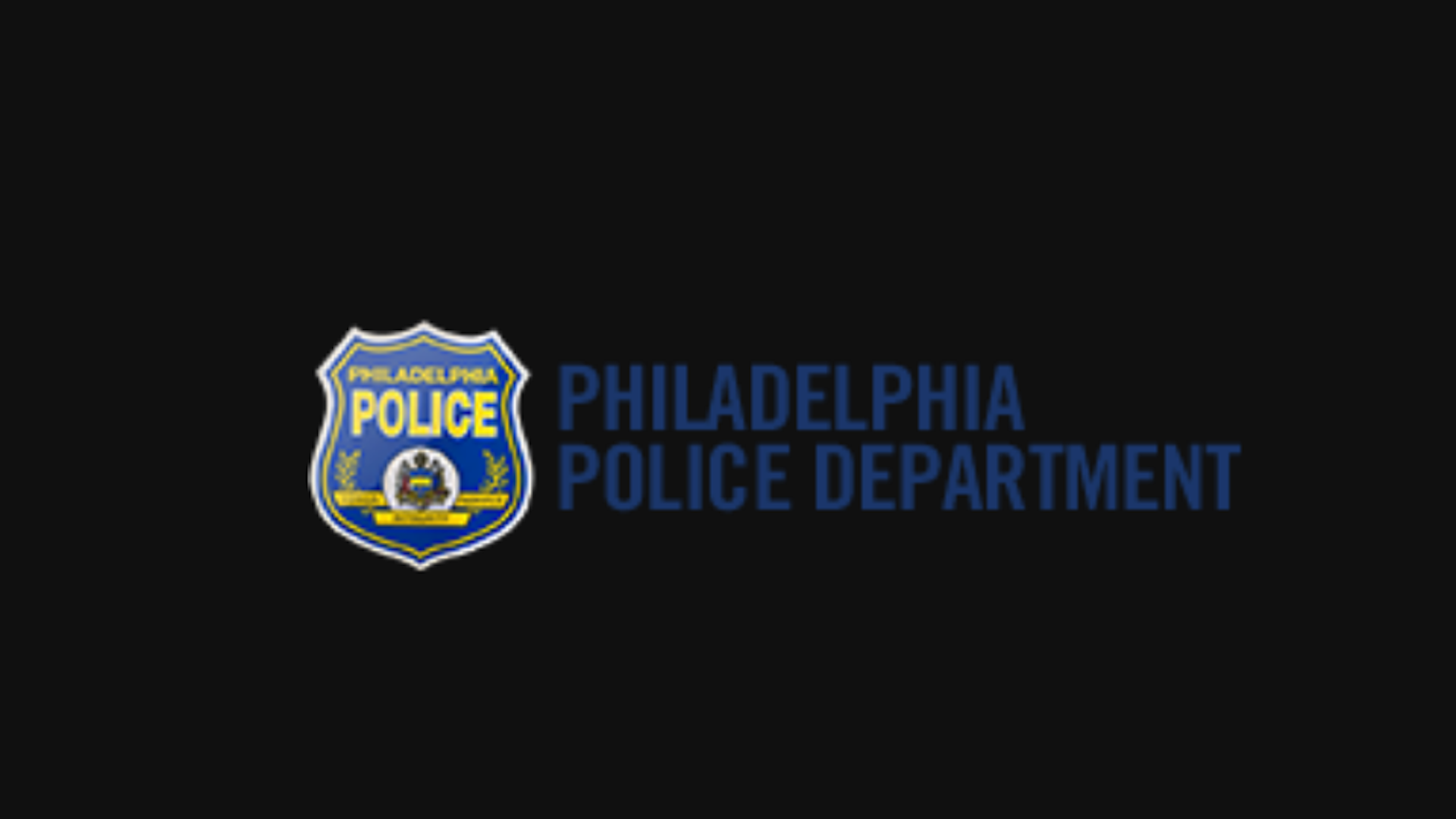
Philadelphia, PA – West Philly saw a quickly escalating situation develop on 4 p.m. Monday afternoon and dragging into the evening and overnight. In a graphic and disturbing video circulating on social media, two white Philadelphia Police (PPD) officers are seen repeatedly shooting a Black man in front of his mother from several feet away as he walked while holding a knife. Neither of the two officers in the video seemed to attempt to use their taser, and they appeared to have fired around ten bullets while they were several arms lengths away from the man they shot.
The man struck down dead by the two PPD officers was identified as 27-year-old Walter Wallace, Jr.
His father, Walter Wallace Sr., told the Philadelphia Inquirer that his son was dealing with mental illness, was on medication, and “his mother was trying to diffuse the situation” when police came and shot him.
Many witnesses were present for Wallace’s death and his family, friends and neighbors quickly reacted with grief and rage to the sight of him being gunned down dead in the street.
Video of the scene taken by Philadelphia Inquirer reporter Ellie Rushing shows that police had placed evidence markers indicating as many as 13 shell casings.
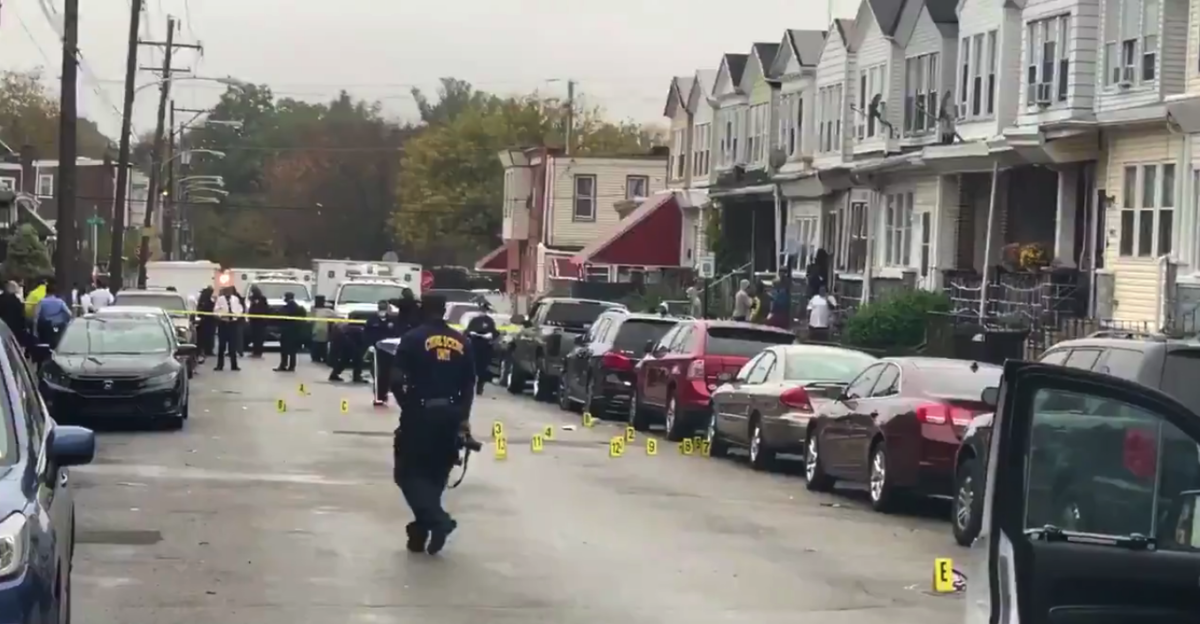
Both of the white officers involved in the shooting death of Walter Wallace, Jr. have reportedly been suspended pending an investigation. If common police practices for “officer-involved shootings” are being followed, they are both presumably now on paid leave.
In an official city statement, Philly Mayor Jim Kenney said, “I have watched the video of this tragic incident and it presents difficult questions that must be answered.” Kenney promised “a speedy and transparent resolution” but the only specific detail he offered was that the “Officer Involved Shooting Investigation Unit of PPD will conduct a full investigation.”
Philly District Attorney Larry Krasner’s statement about the shooting avoided any specifics but also promised an investigation.
Police called in reinforcements to clear the mourning neighbors from the street and reportedly dispersed the crowd at the shooting scene by 6:30 p.m., according to the Philadelphia Inquirer. Around 7 p.m. on Monday night, a crowd of several hundred protesters began to gather at Malcolm X Park.
Protesters marched throughout the area, taking the streets and followed by supporting honking vehicles. They also congregated for a time outside a nearby police precinct.
At some point outside the precinct, objects such as rocks and bricks reportedly began to be thrown at officers.
Police with riot gear and shields then pushed the crowd away from the police building, charging people through the street as trash cans and various other projectiles were pelted at them by an increasingly militant local crowd.
Police appeared unable to contain the community’s furious response to their having shot a Black man to death in the middle of the street in the middle of the day. Crowds went on to smash into several area businesses and take commercial goods, smash and burn police vehicles, launch fireworks, and reportedly commandeered at least one construction vehicle.
In one photo captured by Inquirer journalist Samantha Melamed (who was arrested by PPD while reporting on a protest in June) a police cruiser can be seen burning in front of a billboard reading “the power of justice”:
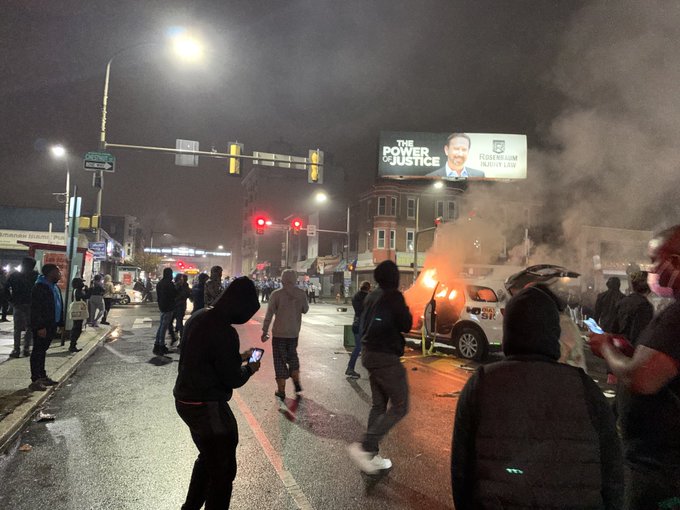
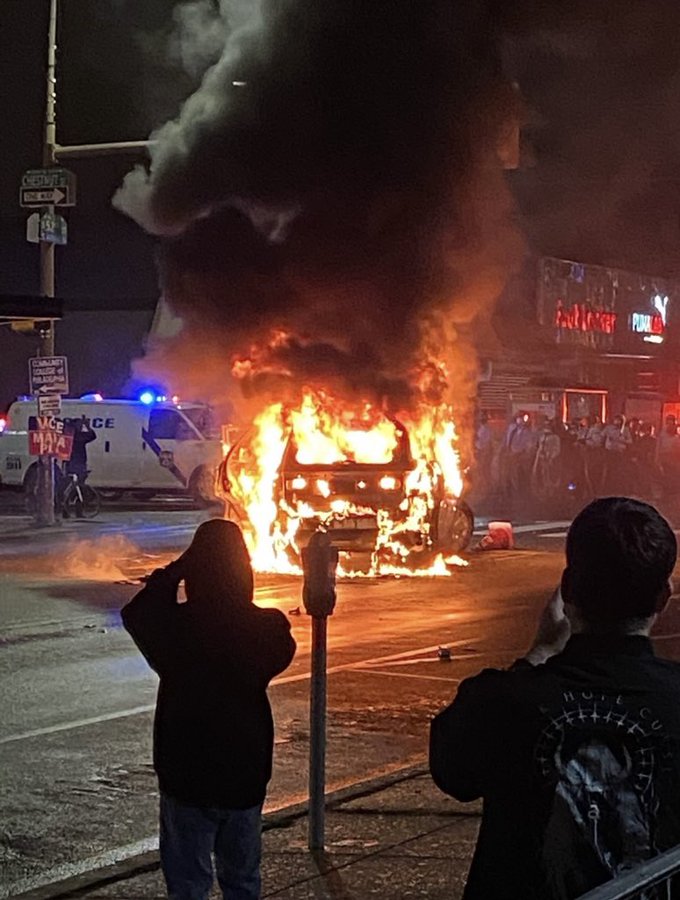
As of early Tuesday morning, protesters remained out in the streets of West Philly. Police made several arrests, with the Major Crimes Unit reportedly having been deployed.
Around 12:45 a.m., police were using batons and charging tactics to encourage the remaining crowd to disperse.
According to Philly journalist Jason Peters, some arrested protesters are being held at PPD’s 18th precinct.
Philadelphia’s lodge of the Fraternal Order of Police, which supported officers involved in brutalizing protesters earlier this year, has indicated it will defend the cops who ended Walter Wallace, Jr.’s life while his family watched.
from Mainstream Media
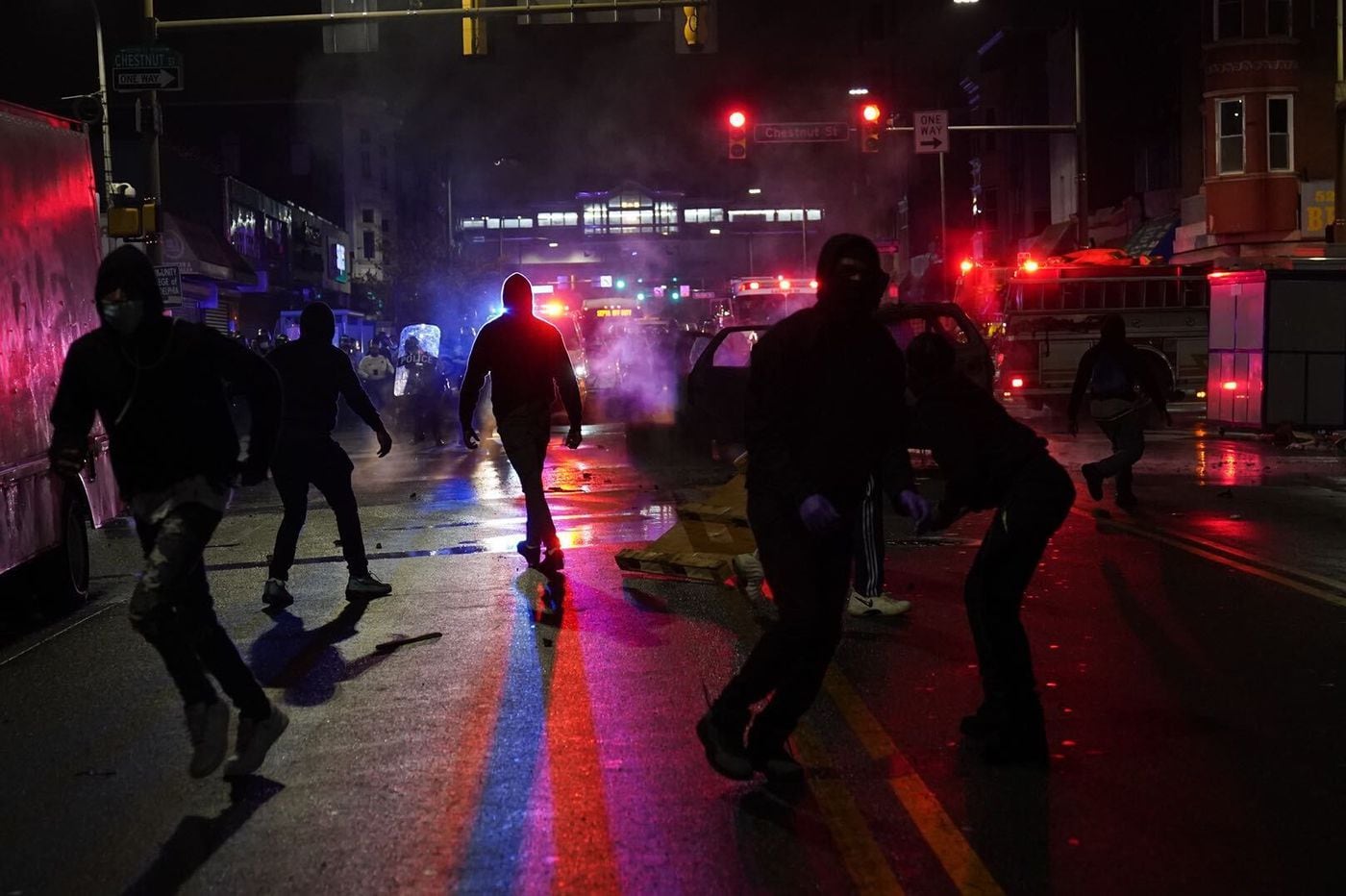
Police officers fatally shot a 27-year-old Black man armed with a knife during a confrontation Monday afternoon in West Philadelphia, an incident that quickly raised tensions in the neighborhood and sparked a standoff that lasted deep into the night.
Late Monday into early Tuesday, police struggled to respond to vandalism and looting along the commercial corridor of 52nd Street, an area that was the scene of clashes between police and protestors earlier this summer. At least one police vehicle was set on fire Monday night and destroyed, and several police officers were injured by bricks or other objects hurled from the crowd. One officer was hospitalized after getting run over by a speeding truck.
The episode began shortly before 4 p.m., police said, when two officers responded to the 6100 block of Locust Street after a report of a man with a knife. Family members identified him as Walter Wallace Jr.
A video posted on social media showed Wallace walking toward the officers and police backing away. The video swings briefly out of view at the moment the gunfire erupts but he appeared to be multiple feet from them when they fired numerous shots.
Police spokesperson Sgt. Eric Gripp said the officers had ordered Wallace to drop the weapon, and he “advanced towards the officers.” Gripp said investigators are reviewing footage of what happened. Both officers were wearing body cameras.
He said both officers fired “several times.” After the man was shot, he fell to the ground, and Gripp said one of the officers drove him to Penn Presbyterian Medical Center, where he died.
Walter Wallace Sr., the man’s father, said his son appeared to have been shot 10 times.
“Why didn’t they use a Taser?” the senior Wallace asked outside a family residence on the block. “His mother was trying to defuse the situation.”
He said his son struggled with mental health issues and was on medication. “He has mental issues,” Wallace said. “Why you have to gun him down?”
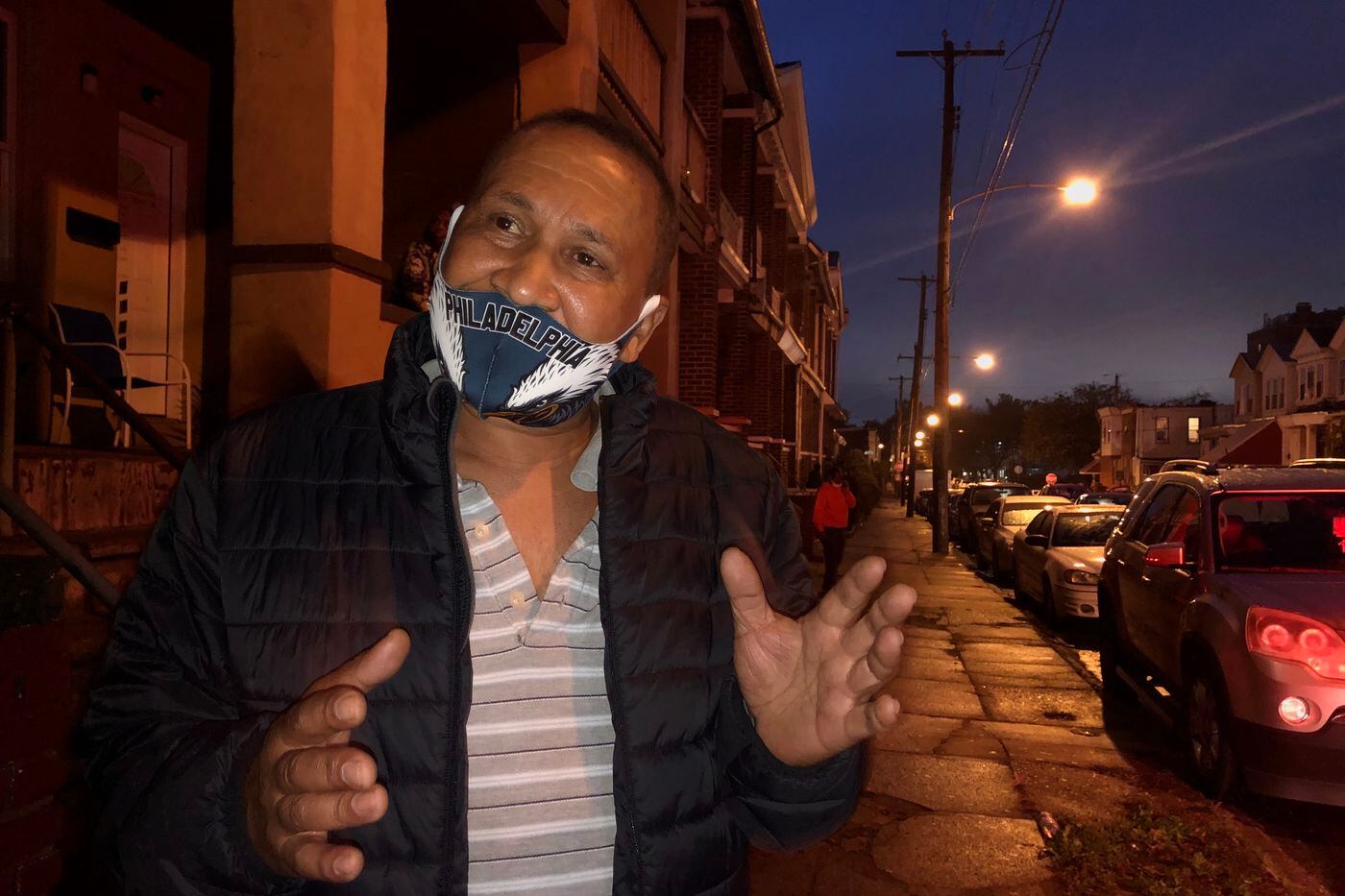
One witness, Maurice Holloway, said he was on the street talking to his aunt when he saw police arrive. Wallace had a knife and was standing on the porch of his home, Holloway said, and officers immediately drew their guns.
Wallace’s mother chased after him as he walked down the steps of his porch, still holding the knife, according to Holloway. His mother tried to shield Wallace and tell police he was her son.
“I’m yelling, ‘Put down the gun, put down the gun,’ and everyone is saying, ‘Don’t shoot him, he’s gonna put it down, we know him,’” said Holloway, 35.
Wallace brushed off his mother and walked behind a car before emerging again, Holloway said.
“He turns and then you hear the shots,” Holloway said. “They were too far from him; it was so many shots.”
Gripp said it was unclear how many times the man was shot or where he was struck. The officers fired possibly a dozen or more times, according to an account by witnesses and family members. Police marked the crime scene with at least 13 evidence markers.
Both officers, who were not publicly identified, were taken off street duty pending an investigation.
Police Commissioner Danielle Outlaw arrived at the scene shortly after the incident as a crowd of neighbors yelled at police and questioned the use of force. By 6:30 p.m. police reopened the street and the crowd had largely dispersed.
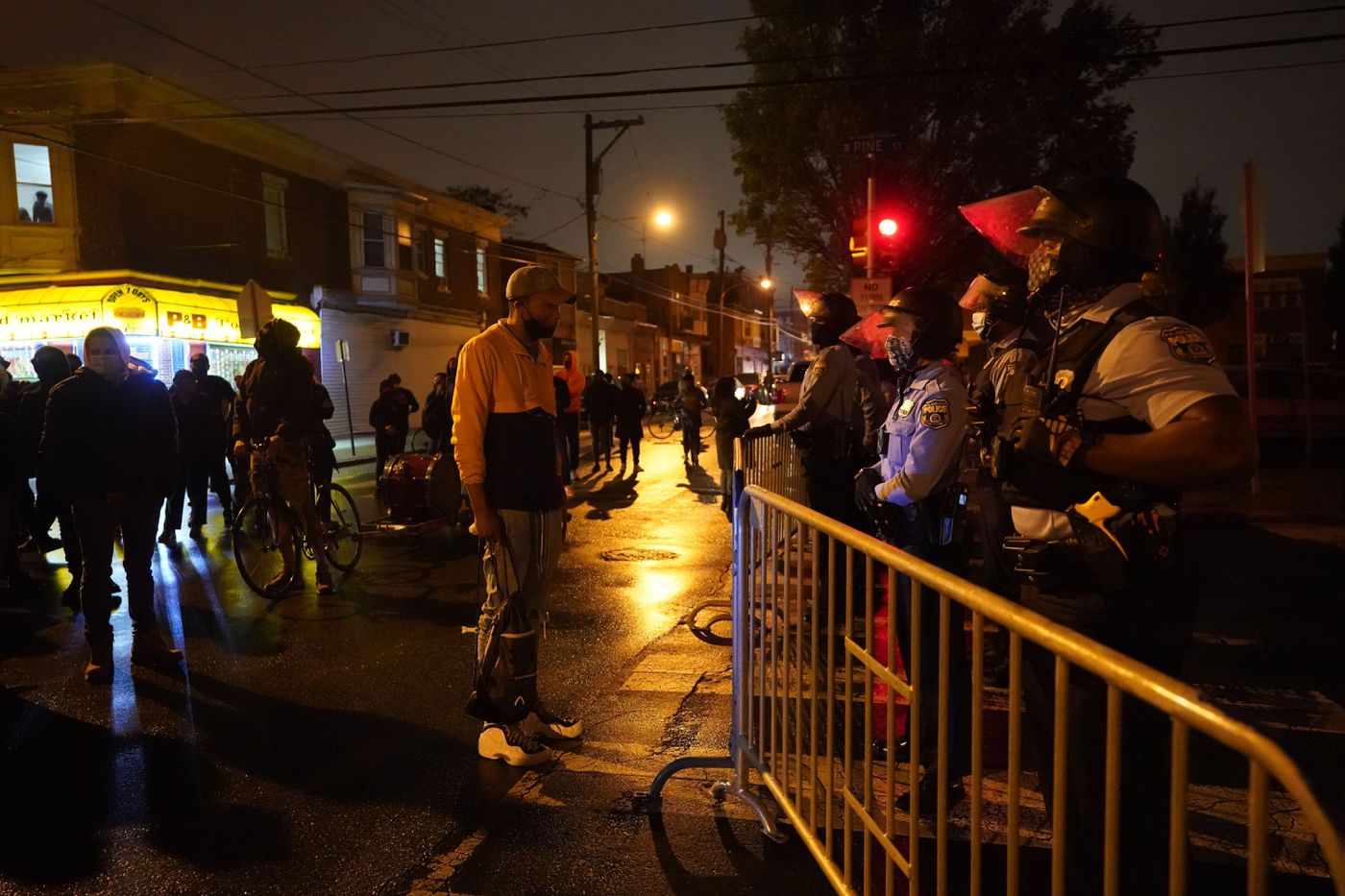
But dozens of protesters then gathered at Malcolm X Park at 51st and Pine Streets, chanting “Black Lives Matter.” They marched to the police station at 55th and Pine Streets as they chanted, “Say his name: Walter Wallace.”
For hours, protesters confronted officers who stood in a line with riot shields behind metal barricades at the station. People in the crowd could be seen throwing objects at the officers. A group also marched into University City, at least one TV news vehicle was vandalized, and police reported that windows had been broken on Chestnut Street.
Between 100 and 200 people then moved to the 52nd Street commercial district and caused considerable property damage from Market to Spruce Streets. Shortly before 1 a.m., a speeding black truck ran over an officer at 52nd and Walnut Street. The incident was captured on an Instagram livestream. The condition of the officer was not immediately known.
The 52nd Street corridor was the scene of unrest on May 31 and early June as nationwide protests erupted over the police killing of George Floyd in Minneapolis. Protesters clashed with Philadelphia officers and set police vehicles on fire; police responded with rubber bullets and tear gas on residential streets. Since then, the police department has forbidden the use of tear gas.
At times Monday, the scene threatened to repeat. Just before midnight, someone set fire to a police vehicle on the street. Ultimately, more officers in riot gear arrived and flooded the neighborhood, dispersing the crowd.